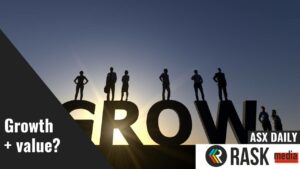When it comes to money, we often take the same approach as airlines do in their safety briefs: ensure your own safety before you start helping others. I think this is important because once you’re in a financially secure position, you are then able to explore other avenues to help, in a much more sustainable way. One of these ways is through making donations to charities, who are then able to use those funds to help and support others.
When Owen and I spoke to bioethics professor, Peter Singer, recently on The Australian Finance Podcast, he spoke about the idea of effective giving, where you actively donate to charities that will maximise the impact that each dollar will have on the world. I’d highly encourage you to listen to this episode, along with Peter’s other thought-provoking works (he even has a TED talk)!
What is an effective donation?
Making donations is a very personal thing, and everyone’s experiences in this area growing up differ greatly. I think my first memory of donating money was buying one of those $2 fundraising wristbands at school or the gold coin donation for “casual clothes day”. I didn’t really know where my pocket money was going to at the time, only that it was contributing to a “good cause”.
Like many areas of finance, we don’t suddenly learn how to donate our money in the most effective ways, so we often start with causes that are close to our heart, such as supporting our colleagues when they grow a moustache in November and buying our fundraising sausage from Bunnings.
However, there are some very clever people like Peter Singer who encourage us to think a little deeper about where we donate our hard-earned dollars to, and the potential impact they can make.
When we give money to a charity, we assume the money will be used to do good. But that’s not always the case. Some charities accomplish very little; a few may even unintentionally cause harm. Most charities probably have some positive impact, but the amount of good they achieve varies widely. By ensuring that you give to effective charities, you can be confident that your donations will make a significant difference. Source: The Life You Can Save
Peter and his team at The Life You Can Save believe that a highly effective charity will have robust evidence on the efficiency of its programs and its ability to execute good outcomes.
- Evidence: They consider the size, quality, and relevance of evidence of a charity’s outcomes.
- Efficiency: They look for cost-effective programs that offer the most bang for the buck.
- Execution: Do they believe the charity can translate marginal donations into good outcomes?
So, what are the best charities to donate to in Australia?
On the Australian Government ACNC Charity Register, there are more than 56,000 charities and this number is growing yearly. With an abundance of choices available, how do you actually choose where to donate your money?
Thankfully, there are organisations which do the research and crunch the numbers, to help you identify the charities which can do the most good with each dollar they receive. Explore these charities on sites like The Life You Can Save, GiveWell, The Good Cause and Effective Altruism Australia.
Are donations tax-deductible in Australia?
A unique feature of making donations to registered charities in Australia is that they’re tax-deductible. This means that if you keep your receipts and proof of your donations, you can include it in your annual tax return as a deduction against your income. It’s an excellent incentive for Australians to donate more to registered charities each year.
Find out more about what you can and cannot claim, and the evidence you need to keep via the ATO’s website.
Resources
- ATO: Gifts and donations
- Philanthropy Australia ›› Our vision is for a more giving Australia
- Are there too many charities in Australia?
- What Makes a Charity Effective?
- Giving 101: The Basics
- Peter Singer Writings – Books and Articles
- Peter Singer: The why and how of effective altruism | TED Talk
- A guide to using your career to help solve the world’s most pressing problems
- Charities and administration costs
- How to donate to charity effectively | CHOICE




